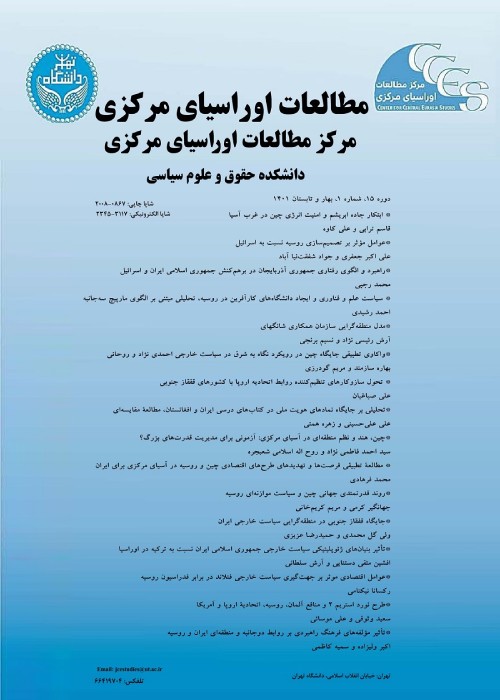Impacts of the Belt and Road Initiative on the Political Economy of West Asia
In 2013, Chinese President Xi Jinping launched the Belt and Road project, which had six land corridors and a sea route, and has now expanded into areas such as space, air, and digital. This initiative has been considered as a new stage in China's opening up (industrial development strategy and transition from economic development strategy) since its announcement. So that a group of it with the anarchic structure of power and geo lenses, The other group, the economic structure of power and in terms of interests. Another group is the identity structure of power and from the point of view of nation-building, and finally, another group has emphasized the class structure of power and analysed it through the lens of imperialism. The reason for this diversity in analysis, in addition to the different views on the study of phenomena, is often rooted in the principles governing foreign policy and China's declared policy of rejecting hegemony (emphasizing low policy and rejecting high policy). In addition, it is Chinese political culture that emphasizes a calm, low-cost, and peaceful emergence. Another factor is the complexity of China's international behaviour which has aligned its policies with existing international institutions and has introduced the New Silk Road as a win-win program that addresses both traditional and non-traditional security issues. Most important of all is the flexibility of the new Silk Road, which is managed with a great plan and leads to analytical confusion and often incomplete analysis among international relations researchers in the study of this phenomenon. Less analytical, however, has seen the initiative through the lens of international economic regimes. The concept of international economic regimes is defined by the absence of force, the absence of hierarchy among issues, and the existence of multiple channels of communication between societies. China's five goals ("policy coordination", "facilities connectivity", "financial integration", "unimpeded trade" and "people-to-people bond") are clearly stated in the Silk Road document. Together, these five goals evoke a kind of international regime and these principles seem to be gradually replacing existing international institutions and regimes. In this regard, China has made a series of theoretical and practical actions and efforts for each region. The real situation can be considered the turning point and the beginning of the transition period or the signs and symptoms of the ideal situation, i.e., a complete long-term Chinese regime at the international level and not at the domestic and regional levels.
why China seeks to create a global regime and how it promotes it through various regions, including West Asia, and what are the theoretical and practical measures of the Chinese regime in West Asia? Accordingly, the main issue of this research is: What are the impacts of the Belt and Road Initiative on the political economy of West Asia in the periods between 2013-2021?Research Hypotheses: The hypothesis of this research is: the belt and road initiative has strengthened and increased GDP and national economic prosperity as the main political goal, strengthening new technologies, especially in the field of transportation and information and communication technology. It has also made economic goals the focus of West Asian foreign policy.
For studying this issue, we examined “the Belt and Road Initiative” with an emphasis on West Asia in both theoretical and practical stages. First, by content analysis method, categories from the four selected texts related to the New Silk Road (New Silk Road Mother Document 2015, Sino-Arab Relations Policy Article 2016, Xi Jinping's Speech at the Boao 2021 Annual Assembly, and the Chinese Foreign Minister's Five-Article Initiative for West Asia 2021) is identified as China's theoretical action, and in the second stage, the practical action of China in West Asia is described and analyzed using the model of causal economic processes derived from the theory of international economic regimes.
The findings of this study show that China seeks to establish an inverted global regime, with an emphasis on low policies and peacefully through various regions, including West Asia.
- حق عضویت دریافتی صرف حمایت از نشریات عضو و نگهداری، تکمیل و توسعه مگیران میشود.
- پرداخت حق اشتراک و دانلود مقالات اجازه بازنشر آن در سایر رسانههای چاپی و دیجیتال را به کاربر نمیدهد.


